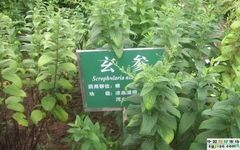This category of herbs functions to clear internal heat, relieve heat toxins, cool the blood, and drain heat, primarily used for heat-prone constitutions and internal heat syndromes.
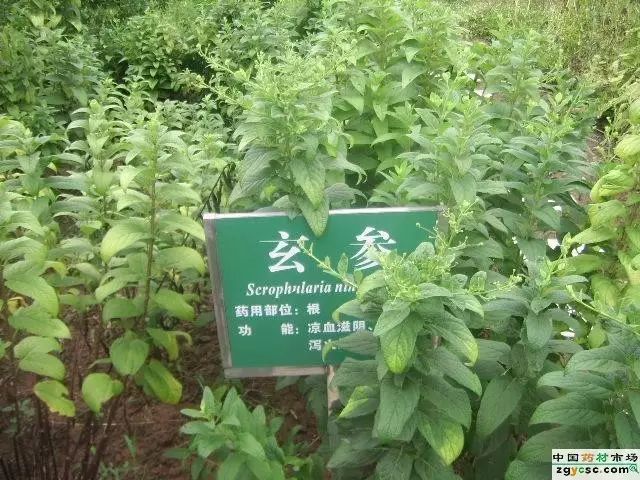
1. Xuan Shen (Scrophularia Root)
Xuan Shen is the root of the Scrophulariaceae plant Scrophularia ningpoensis and S. buergeriana, containing xuan shen saponins, iridoids; it also contains volatile oils, alkaloids, etc. Pharmacological tests have shown that Xuan Shen decoction, alcohol extract, and infusion have blood pressure-lowering effects; it also has vasodilatory and cardiotonic effects; various Xuan Shen species have antipyretic and anticonvulsant effects.
In TCM, it is considered cold in nature, sweet and bitter in taste, and functions to nourish yin and lower fire, cool the blood and detoxify, suitable for symptoms such as heat disease with thirst, rashes, bone steaming fever, insomnia, spontaneous sweating, night sweats, injury to fluids with constipation, and sore throat.
Dosage: 6-12 grams; avoid use in cases of loose stools and excessive phlegm-dampness.
2. Jue Ming Zi (Cassia Seed)
Jue Ming Zi is the seed of the leguminous plant Cassia obtusifolia or Cassia tora, containing anthraquinones and anthrones, Jue Ming Su, and vitamin A, etc. Pharmacological tests have shown that Jue Ming Zi has blood pressure-lowering and serum cholesterol-lowering effects; it has antibacterial effects against various pathogens and promotes bowel movements.
In TCM, it is considered slightly cold, sweet and bitter in taste, and functions to clear the liver and improve vision, promote urination and relieve constipation, suitable for symptoms such as liver heat or wind-heat in the liver channel causing red, painful eyes, photophobia, and excessive tearing; it is also effective for treating hypertension, hepatitis, ascites due to cirrhosis, and habitual constipation.
Dosage: 3-9 grams, crushed and decocted.
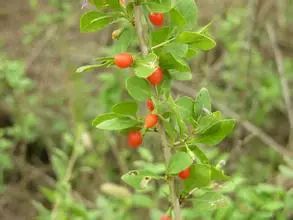
3. Di Gu Pi (Lycium Bark)
Di Gu Pi is the root bark of the Solanaceae plant Lycium barbarum, containing cinnamic acid, various phenolic compounds, betaine, and linoleic acid; Di Gu Pi has significant antipyretic effects, and its decoction can lower blood sugar, reduce serum cholesterol, and combat fatty liver; its infusion has shown significant blood pressure-lowering effects in animals.
In TCM, it is considered cold in nature, sweet and bland in taste, and functions to cool the blood, reduce steaming, and clear lung heat, suitable for symptoms such as deficiency heat with night sweats, lung heat cough and wheezing, blood heat causing hemoptysis, epistaxis, carbuncles, and ulcers, as well as tuberculosis and hypertension.
Dosage: Generally 3-9 grams.
4. Lu Gen (Reed Rhizome)
Lu Gen is the underground stem of the Poaceae plant Phragmites australis, containing coixol, asparagine, etc.
In TCM, it is considered cold in nature, sweet in taste, and functions to clear heat and generate fluids, relieve irritability, stop vomiting, and promote urination, suitable for symptoms such as heat disease injuring fluids, irritability and thirst, stomach heat vomiting, choking sensation, and treating lung heat cough and lung abscess.
Dosage: Generally 9-30 grams for dried; 15-40 grams for fresh.
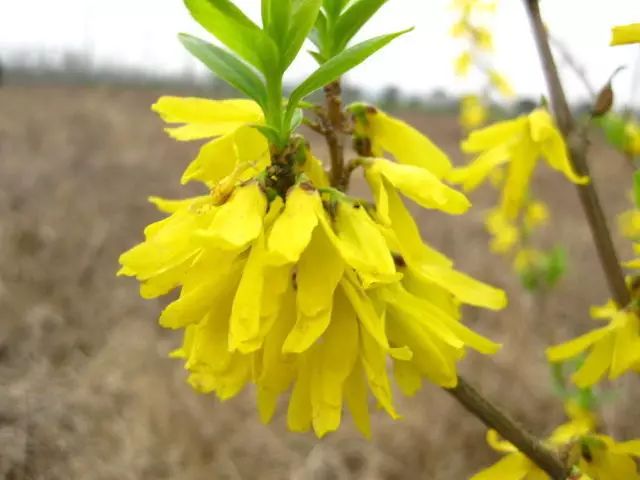
5. Lian Qiao (Forsythia Fruit)
Lian Qiao is the fruit of the Oleaceae plant Forsythia suspensa, containing volatile oils, forsythoside, flavonoids, alkaloids, etc.; pharmacological tests indicate that Lian Qiao has broad-spectrum antibacterial effects, with forsythoside being a major antibacterial component; it also has anti-inflammatory, antiemetic, diuretic, and cardiotonic effects; the flavonoids can enhance capillary density, thus having hemostatic effects for bleeding caused by capillary rupture and subcutaneous hemorrhage.
In TCM, it is considered slightly cold, bitter in taste, and functions to clear heat and detoxify, disperse lumps and reduce swelling, suitable for symptoms such as warm heat, erysipelas, rashes, carbuncles, and allergic purpura.
Dosage: Generally 6-9 grams.
6. Mu Dan Pi (Peony Root)
Mu Dan Pi is the root bark of the Ranunculaceae plant Paeonia lactiflora, containing paeonol, paeoniflorin, volatile oils, and phytosterols. Pharmacological tests have shown that Mu Dan Pi has blood pressure-lowering effects; it has analgesic, sedative, anti-inflammatory, and antipyretic effects; it has strong inhibitory effects against various pathogens.
In TCM, it is considered cool in nature, bitter and pungent in taste, and functions to clear heat, cool the blood, harmonize the blood, and clear stasis, suitable for symptoms such as heat entering the blood level, rashes, severe pain, hemoptysis, carbuncles, and traumatic injuries.
Dosage: 5-9 grams, but avoid use in cases of spleen and stomach deficiency with diarrhea.
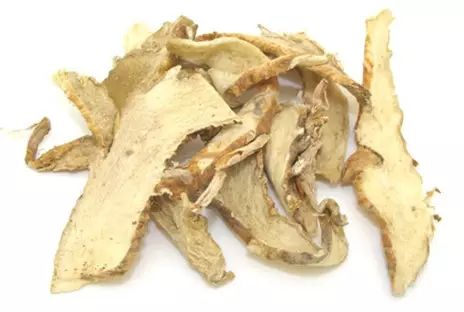
7. Zhi Mu (Anemarrhena Rhizome)
Zhi Mu is the rhizome of the Liliaceae plant Anemarrhena asphodeloides, containing various saponins and flavonoids, as well as mangiferin. Tests have shown that Zhi Mu has significant antipyretic effects, with notable efficacy against epidemic hemorrhagic fever, epidemic type B encephalitis, and tidal fever in tuberculosis.
In TCM, it is considered cold in nature, sweet and bitter in taste, and functions to clear heat and drain fire, nourish yin and moisten dryness, suitable for symptoms such as lung heat cough and wheezing or yin deficiency cough, irritability and thirst, bone steaming fever, difficulty urinating, and constipation.
Dosage: Generally 6-9 grams, but avoid use in cases of kidney yang deficiency, weak pulse, and loose stools.
8. Ban Lan Gen (Isatis Root)
Ban Lan Gen is the root of the Brassicaceae plant Isatis indigotica and Isatis tinctoria, containing indirubin, indigo, and β-sitosterol; Ban Lan Gen has significant antiviral effects. It inhibits various pathogens and has effects against leptospirosis. Clinically, Ban Lan Gen decoction taken orally or injected intramuscularly has shown significant efficacy in treating epidemic type B encephalitis; it is also effective for acute and chronic hepatitis, alleviating or resolving symptoms and improving liver function; Ban Lan Gen is effective in treating viral skin diseases such as herpes simplex, shingles, pityriasis rosea, and flat warts.
In TCM, it is considered cold in nature, bitter in taste, and functions to clear heat and detoxify, cool the blood, and benefit the throat, suitable for symptoms such as influenza encephalitis, type B encephalitis, pneumonia, erysipelas, heat toxin rashes, fiery eyes, and herpes.
Dosage: Generally 5-9 grams; avoid use in cases of spleen and stomach deficiency with cold.
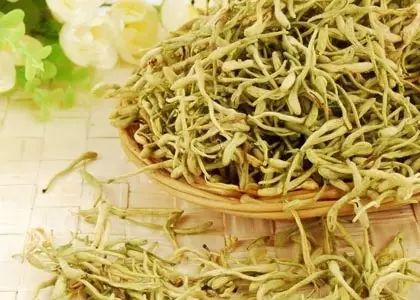
9. Jin Yin Hua (Honeysuckle Flower)
Jin Yin Hua is the flower bud of the Caprifoliaceae plant Lonicera japonica, containing chlorogenic acid, inositol, flavonoids, etc.; pharmacological tests have shown that Jin Yin Hua has anti-inflammatory and antipyretic effects, inhibiting influenza viruses and various pathogens, reflecting its heat-clearing and detoxifying properties.
Brain Teaser: What to do when you see a female guest taking a shower?
A hotel is hiring a manager, and many candidates are applying. The boss wants to test them: “When you walk into a guest’s room and see a female guest taking a shower, what should you do?”
Everyone rushes to answer, some say, “Sorry, miss, I didn’t mean to” while others say, “Miss, I saw nothing.” The boss shakes his head continuously.At this moment, a handsome young man says something and is hired on the spot!
Dear friend, do you know what he said?

